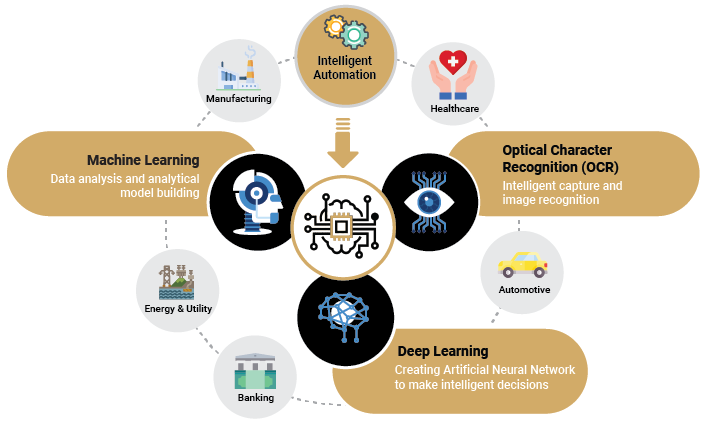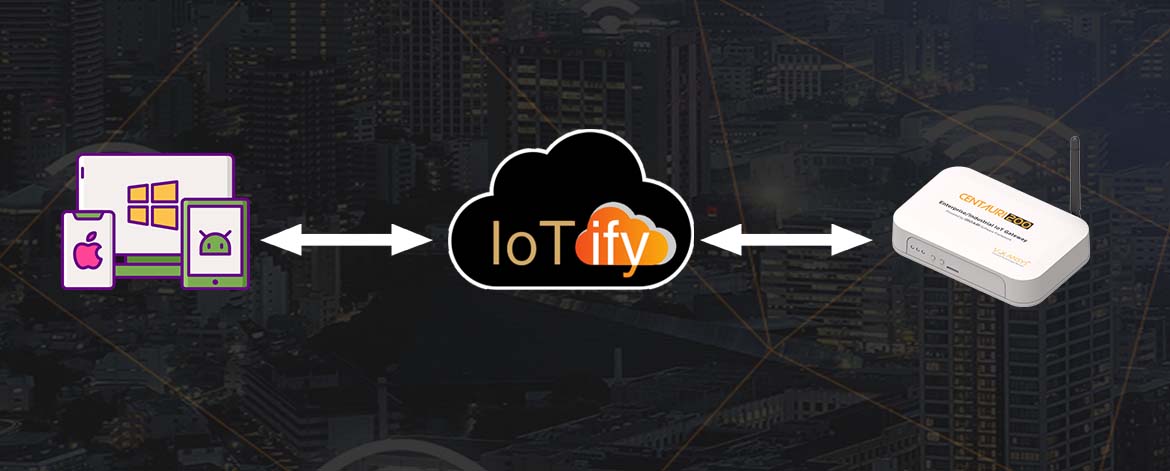As businesses plan for 2020, intelligent automation has become a top priority for many executives. Many enterprises have invested in intelligent automation over the last few years, Forrester predicts the industry will continue to grow from $250 million in 2016 to $12 billion in 2023. With more companies recognizing and embracing the potential of Artificial Intelligence (AI) and Machine Learning (ML) to magnify value creation, there is seen a gradual reshaping of the enterprises. Companies that integrate AI and ML with businesses enable swift unprecedented changes to their key processes – product development, production and distribution, quality check, order fulfilment, resource management, marketing, customer relationships and management, and much more.
Artificial Intelligence (AI) includes a broad set of cutting-edge technologies such as Machine Learning (ML), Deep Learning (DL), Optical Character Recognition (OCR), Voice Recognition and so on, when coupled with Robotics create intelligent automation for organizations across multiple industrial domains.
Let us see how some of these technologies help industries globally to implement automation into their businesses.
Anomaly detection using Machine Learning
Anomaly detection via machine learning can be extensively used to automate the health monitoring of the equipment by detecting anomalies in various attributes like vibrations, sound, temperature, etc. with the help of smart sensor devices. This is useful to identify early wear and tear of the equipment and avoid catastrophic damage. It can catch the smallest flaw that the human eye may miss upon. The data is constantly collected from the sensors and pre-processed using different techniques like data cleaning, integrating, transforming, and reduction for data mining. Techniques can be selected depending on the type of attributes required to extract the features and based on the features various machine learning algorithms can be applied to detect the anomalies.
Smarter and safer automotive with Deep Learning
For self-driving cars, it is essential to recognize objects/ pedestrians on the road, irrespective whether it is day or night, clear or foggy/cloudy weather. For the success of autonomous cars, automobile companies integrate advanced driver assist systems with thermal imaging. Implementing Deep Learning algorithms on the image data set captured by thermal cameras, it is possible to identify pedestrians in any weather condition and at any time of the day. Depending on the distance of the pedestrians/objects, it can cover a larger part of the image or smaller part of the image. There are few deep learning algorithms like Fast R-CNN or YOLO that can recognize pedestrians/objects from a significant distance by executing following steps:
- Classify the image into classes like pedestrian/ car/ object
- Find the region of the image where particular class falls
This technology enhances automotive industry making autonomous cars safer and efficient on roads ensuring its success.

Automated quality control for manufacturing using automated visual inspection based on OCR
Traditionally, Quality Control (QC)in manufacturing plants was performed by human experts. But with the help of Deep learning algorithms which run on automated visual inspection systems has automated the QC process by identifying good and bad manufactured products based on the images fed to the algorithm during training. It can identify manufacturing defects repetitively, with consistency and without any exhaustion. This is useful especially in hazardous manufacturing environments involving fire, chemicals, etc. where human access is not safe. OCR is another technology which underneath uses deep learning to recognize the characters. It is of great use in the manufacturing to automate processes which are subject to human errors due to fatigue or casual behavior. These activities include verifications of lot code, batch code, expiry date, etc. Various CNN architectures like LeNet, Alexnet, etc. can be used for this automation and it can also be customized to achieve the desired accuracy.
Improved decision making for banking with Machine Learning
For the banking industry across the world, lending money is a huge business. The value of the loan and whether to sanction it or not is purely based on how likely an individual or business will be able to pay back the loan. Thus, determining creditworthiness is most important decision for this business to succeed. Along with credit score various other parameters like age of the applicant, income, debt to income ratio, etc.are considered for making these decisions which makes the whole process very complex and time consuming. To save on time and expedite the process, trained Machine learning algorithms like Random Forest and Support Vector Machine (SVM) can be used to predict and classify the creditworthiness of the applicant. Data of all the parameters involved in the decision making can be used to train the Supervised ML model using above mentioned algorithms and the trained model can be used to predict whether loan should be sanctioned or not. This can simplify the classification of applicants and help in loan sanction decision making.
As we see, AI – ML is no longer the future. It is the here and now, creating a new vision of machine-human collaboration and taking businesses to new heights. VOLANSYS Machine Learning services help organizations across various industrial domains to develop custom solutions based on proprietary or open source algorithms/frameworks that processes data and runs sophisticated algorithms on cloud and edge. Our team helps build, train, validate, optimize, deploy and test machine learning models using latest tools and technologies. This ensures faster decision making, increased productivity, business process automation, and faster anomaly detection for the businesses.
We also have partnerships with solution platform and cloud providers like NXP and AWS which enables the design of smart automated solutions. VOLANSYS has developed intelligent solutions based on NXP i.MX series edge platforms and AWS SageMaker service for multiple clients across various industrial domains.
To know more about our ML offerings, visit our success stories.

About the Author: Kaumil Desai
Kaumil Desai is associated with VOLANSYS as a Delivery Manager past 3 years. He has vast experience in product development, Machine Learning on edge, complex algorithms design & development for various industries including Industrial automation, Electrical safety, Telecom etc.









